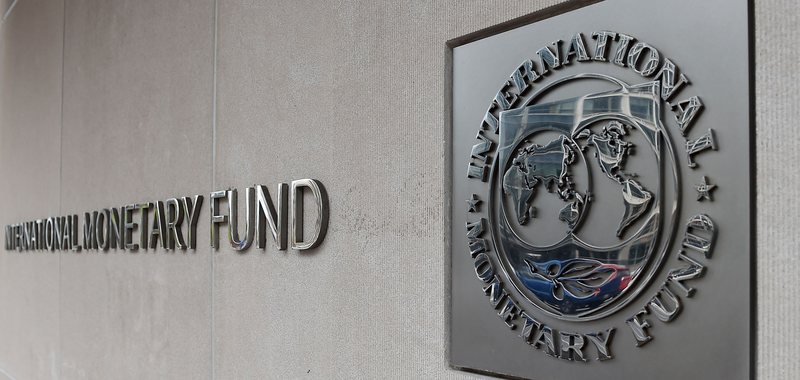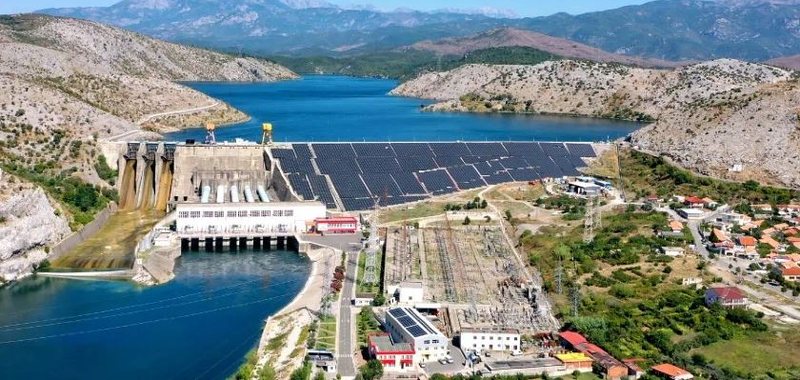Sa frytdhënëse ishte ekonomia shqiptare në 2024? - Raporti vjetor i BSH/ U rritën punësimi dhe pagat. Më shumë të ardhura për familjet

Në vitin që lamë pas, rritja ekonomike mbeti në nivele të larta, rreth nivelit 4%, duke u shoqëruar edhe me një rritje të punësimit dhe pagave. Banka e Shqipërisë ka depozituar pranë Kuvendit raportin e saj për vitin 2024, duke e vlerësuar si pozitiv për ekonominë.
Rritja e punësimit dhe pagave ka shtuar të ardhurat për familjet shqiptare, veçanërisht në një mjedis me inflacion të ulët. Në 2024, inflacioni zbriti në një nivel mesatar prej 2.2%, duke shënuar një rënie të ndjeshme nga nivelet e larta prej 4.8% të një viti më parë. Kjo rënie ndikoi pozitivisht në uljen e kostos së jetesës dhe në përmirësimin e fuqisë blerëse të të ardhurave dhe kursimeve të familjeve shqiptare.
Nga ana tjetër, rënia e borxhit të jashtëm në nivelin 40.8% të Prodhimit të Brendshëm Bruto (PBB), apo rritja e rezervave valutore të Shqipërisë në nivelin 6.3 miliardë euro, përmirësoi ndjeshëm aftësinë paguese të vendit. Gjatë 2024, deficiti buxhetor u reduktua në 0.7% të PBB-së dhe borxhi publik në 53.8% të PBB-së.
Për sa i përket infrastrukturës së pagesave, numri i pagesave elektronike të kryera nëpërmjet bankave u rrit me 24.4% krahasuar me një vit më parë. Ndërkohë, treguesi i ‘pagesave për frymë’, i synuar në 10 pagesa për frymë, arriti në 23 pagesa për frymë në fund të vitit. Ky përparim pasqyron tendencat në rritje të digjitalizimit të shërbimeve financiare, duke lehtësuar transaksionet elektronike dhe përshpejtuar përfshirjen financiare të individëve dhe bizneseve.
Vitin e kaluar, stoku i rezervës valutore bruto u rrit në 6.2 miliardë euro nga 5.8 miliardë që ishte më parë.
Ndërkohë, edhe cilësia e portofolit të kredisë rezulton të jetë rritur. Rezultati financiar i sistemit rezultoi 37.4 miliardë lekë, me një rritje prej 17% krahasuar me vitin 2023. Zgjerimi i aktiveve të sektorit bankar pasqyroi kryesisht rritjen e kredisë dhe investimeve në letrat me vlerë, ndërsa rritja e detyrimeve pasqyroi tërësisht zgjerimin e depozitave me rreth 5% në terma vjetorë.
Kostot e kreditimit ranë dhe kredia u rrit në 15.7% nga 9.7% një vit më parë, e mbështetur gjithashtu nga rritja e kërkesës dhe qasja pozitive e bankave ndaj kreditimit. Rritja e kredisë ka financuar nevojat për konsum dhe për investime të familjeve dhe bizneseve.

Android dhe iOS, “kokë më kokë” në Shqipëri/ Cilin sistem operativ përdorin më shumë shqiptarët?
Përdorimi i platformave mobile në Shqipëri vazhdon të evoluojë, duke reflektuar prirjet globale dhe preferencat e konsumatorëve. Sipas statistikave më të......

Konsumatori dhe biznesi, më shumë besim në ekonomi - BSH: Treguesi i ndjesisë ekonomike u rrit me 1.1 pikë në muajin mars
Treguesi i ndjesisë ekonomike, një indikator që matet nga Banka e Shqipërisë, u rrit me 1.1 pikë në muajin mars duke qëndruar 8.1 pikë mbi mesataren......

“Gjithçka për suksesin e sipërmarrësit shqiptar” - Berisha: Do të lehtësojmë në maksimumin e mundshëm barrën fiskale
Partia Demokratike do të bëjë gjithçka për suksesin e sipërmarrësit shqiptar duke lehtësuar në maksimumin e mundshëm barrën fiskale dhe mbrojtur eksportet.......

FMN nuk sheh recesion në “horizont” - Por, pasiguria e shkaktuar nga tarifat mund të dëmtojë rritjen globale
Përpjekja e presidentit amerikan Donald Trump për tarifa gjithëpërfshirëse po krijon pasiguri të madhe dhe dëmton besimin, por nuk ka gjasa të shkaktojë një......

Indianët zotërojnë më shumë prona në Londër sesa vetë anglezët!
Llogaritjet e fundit nga zhvilluesi Barratt London treguan se numri i indianëve që zotërojnë pasuri të paluajtshme në zemër të Mbretërisë së Bashkuar......

Kroacia, 2.7 miliardë euro për mbrojtjen - Kryeministri Plenkoviç: Buxheti është 5-fishuar në raport me vitin 2016
Kryeministri kroat Andrej Plenkoviç ka njoftuar se buxheti i mbrojtjes në vend do të rritet, ndërsa Bashkimi Evropian përballet me presionin për të forcuar......

“Të ardhurat për frymë janë 3-fishuar” - Rama: Në vitin 2030 do të arrijnë në 15 mijë euro
Gjatë një bashkëbisedimi me qytetarët në platformat sociale, Kryeministri Edi Rama u shpreh se që nga viti 2013 e deri më sot të ardhurat për frymë në......

Impianti diellor lundrues në Vaun e Dejës - Projekti me vlerë 13.86 mln euro, KESH: Zbatimi nis brenda vitit 2025
Projekti për ndërtimin e një impianti diellor lundrues për prodhimin e energjisë elektrike në Vaun e Dejës po shkon drejt zbatimit. 4 vite pas krijimit të......



















